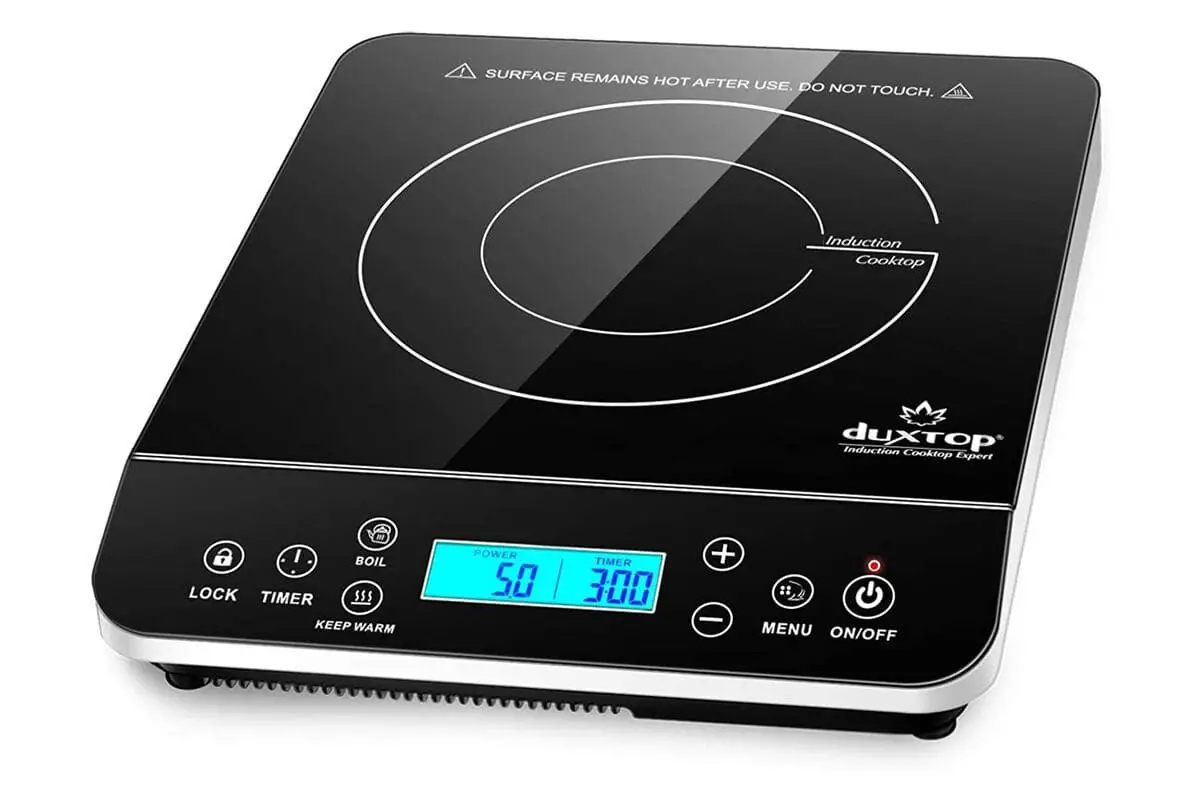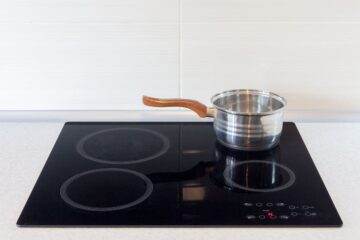Induction stoves are becoming more and more popular in modern kitchens. They offer a faster, more efficient, and safer way of cooking. But how do induction stoves work?
Unlike traditional gas or electric stoves, induction stoves use electromagnetic induction to heat up cookware. This means that the heat is generated directly in the cookware itself, rather than being transferred through an intermediary surface. The stove creates an oscillating magnetic field, which induces an electric current in the cookware. This current generates heat, which then cooks the food.
Induction stoves offer several advantages over traditional stoves. They heat up faster, are more energy-efficient, and are safer to use. Because the heat is generated directly in the cookware, the stove itself doesn’t get hot. This means that there is less risk of burns or fires, and that the stove is easier to clean. Additionally, because the heat is generated more quickly and efficiently, induction stoves can save time and energy.
Overview of Induction Stoves
Induction stoves are a modern type of stove that use electromagnetic induction to heat cookware. They are becoming increasingly popular due to their energy efficiency, speed, and precision. In this section, we will provide an overview of induction stoves, including their basic components and how they work.
Basic Components
An induction stove consists of a flat, glass-ceramic surface with one or more induction coils beneath it. These coils are made of copper wire and generate a high-frequency magnetic field when an electric current is passed through them. The magnetic field passes through the glass-ceramic surface and interacts with the magnetic properties of the cookware placed on top of it.
Induction stoves require cookware that is made of magnetic materials, such as cast iron or stainless steel. Non-magnetic materials, such as aluminum or copper, will not work on an induction stove. The cookware must also have a flat bottom to ensure maximum contact with the surface of the stove.
Magnetic Fields
When the magnetic field generated by the induction coil interacts with the magnetic properties of the cookware, it creates an electric current within the cookware. This current generates heat, which cooks the food. The heat is produced directly in the cookware, rather than in the stove itself, making induction stoves more efficient than traditional stoves.
The strength of the magnetic field can be adjusted to control the temperature of the cookware. This allows for precise temperature control and makes induction stoves ideal for cooking delicate dishes that require precise temperature control.
How Induction Stoves Work
Generating an Electromagnetic Field
Induction stoves work by creating an electromagnetic field that generates heat directly in the cookware. This is done using a copper coil located underneath the ceramic surface of the stove. When an alternating electric current flows through the coil, it creates a magnetic field that oscillates at a high frequency.
Induction Heating Process
When a compatible pot or pan is placed on the stove, the magnetic field induces an electric current in the cookware, which in turn generates heat due to the resistance of the metal. This process is known as induction heating. The heat is then transferred to the food inside the cookware, allowing for precise and efficient cooking.
Unlike traditional gas or electric stoves, induction stoves have no open flame or heating element. This means that the surface of the stove remains cool to the touch, reducing the risk of burns and making it easier to clean.
Cookware Compatibility
Not all cookware is compatible with induction stoves. The cookware must be made of a magnetic material, such as cast iron or stainless steel, in order to generate the electric current required for induction heating. Aluminum, copper, and glass cookware will not work on an induction stove unless they have a magnetic layer added to the bottom.
It is important to note that the size and shape of the cookware can also affect its compatibility with induction stoves. The cookware must be flat and have a diameter that matches the size of the induction zone on the stove. Using cookware that is too small or too large can result in uneven heating and poor cooking performance.
Advantages of Induction Stoves
Induction stoves are becoming increasingly popular due to their many advantages over traditional gas and electric stovetops. In this section, we will discuss the top advantages of induction stoves.
Energy Efficiency
One of the biggest advantages of induction stoves is their energy efficiency. Induction stoves use electromagnetic energy to heat the cookware directly, which means that very little heat is lost during the cooking process. According to the Environmental Protection Agency, induction stoves are 85% efficient, while gas stoves are only 32% efficient. This means that induction stoves use less energy and are better for the environment.
Precision Cooking
Another advantage of induction stoves is their precision cooking. With induction stoves, you can control the temperature of the cookware with great accuracy. This allows for more precise cooking and better results. Induction stoves also heat up faster than gas or electric stoves, which means that you can start cooking your food sooner.
Safety Features
Induction stoves also come with a number of safety features that make them safer to use than traditional stovetops. For example, induction stoves have automatic shut-off features that turn off the stove if it detects that the cookware has been removed or if there is no cookware on the stove. Induction stoves also have hot-burner warning lights that alert you when the stove is still hot after cooking. Additionally, induction stoves only heat up the cookware and not the surrounding area, which reduces the risk of burns or fires.
Disadvantages of Induction Stoves
While induction stoves offer many benefits, there are also some disadvantages to consider before making a purchase.
Cookware Limitations
One of the main limitations of induction stoves is that they require compatible cookware. Since induction stoves use magnetic fields to heat up the cookware, only cookware made of ferromagnetic materials, such as cast iron or stainless steel, will work. Cookware made of glass, copper, or aluminum will not work with induction stoves unless they have a layer of magnetic material on the bottom.
Cost
Induction stoves are typically more expensive than traditional gas or electric stoves. While the prices have come down in recent years, they still tend to be a more expensive investment than low-end gas appliances. In addition, induction stoves may also be more expensive to operate than gas stoves, depending on the cost of electricity in your area.
Noise
Induction stoves and cooktops can sometimes cause a rattling sound, which is a result of the high energy transferring from the coil to the pan. This whirring sound often goes away when you turn down the heat, but it can be a nuisance for some users.
Conclusion
In conclusion, induction stoves are a highly efficient and safe way of cooking. They use electromagnetic energy to heat up cookware made of magnetic materials, which in turn heats up the food. This process is faster and more energy-efficient than traditional gas or electric stoves.
One of the main advantages of induction stoves is that they are much safer than gas stoves. Since there is no open flame, there is less risk of a fire or gas leak. Additionally, induction stoves only heat up the cookware, not the surrounding air, which makes them cooler to the touch and reduces the risk of burns.
Another advantage of induction stoves is that they are very energy-efficient. They use up to 90% of the energy they generate, compared to gas stoves, which lose up to 60% of their energy to the surrounding air. This means that induction stoves can save you money on your energy bills in the long run.
However, there are also some disadvantages to induction stoves. For example, they require cookware made of magnetic materials, such as cast iron or stainless steel. This means that you may need to purchase new cookware if you switch to an induction stove.
Overall, induction stoves are a great option for anyone looking for a safe, efficient, and environmentally friendly way of cooking. While they may require some adjustments, such as purchasing new cookware, the benefits they offer make them a worthwhile investment.




